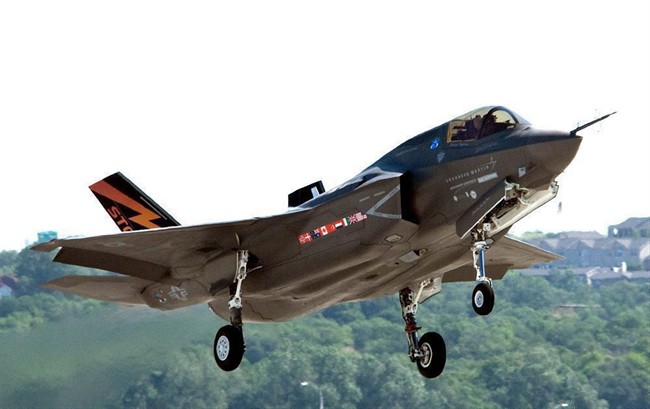Defence Minister Harjit Sajjan found himself once again being asked to clarify the government’s position on the F-35 fighter jet on Tuesday after reports surfaced that Ottawa is set to opt for another model of plane.

“We are looking at a gap that we have to deal with,” Sajjan told reporters on Parliament Hill, referring to his previous assertion that a gap in Canada’s military capabilities will open before the country’s existing fleet of CF-18 aircraft is retired in 2025.
“These (CF-18) jets should have been replaced a long time ago.”
The Liberals promised during the election campaign that they would not purchase Lockheed Martin’s F-35 jets, arguing that the procurement process started under the Conservatives was beset with problems and setbacks.
WATCH: Justin Trudeau plans to scrap controversial F-35 fighter purchase if elected
But that leaves only a small number of other options, and earlier this week, a report in The National Post suggested that the Trudeau government is looking to Boeing’s Super Hornet fighter jets to act as a stop-gap measure in the coming decade. The F-35 might then be added to augment the military’s capabilities down the line.
A search of lobbying records shows representatives from Boeing have had contact with several government officials in recent months, although it’s unclear precisely what the discussions involved.
Asked about this during Question Period on Tuesday, Sajjan countered that he also sat next to a Lockheed Martin executive at a dinner in Singapore.
READ MORE: Can Canada really pass on the F-35s with no impact?
Any attempt to exclude Lockheed Martin from bidding on a defence contract could trigger legal action. Sajjan would not confirm on Tuesday if there would, in fact, be an open competition that would include both the F-35 and Super Hornet.
“I’m looking through all the information now, but one thing’s for sure: I want to make sure that we buy the right type of airplane for our men and women,” he said.
Asked why the previous government had never spoken of a “gap” in military capability before, the minister replied that “just because somebody didn’t talk about it, doesn’t mean that it (didn’t) exist.”
The Conservatives announced in 2014 that they would spend $400 million on upgrades to the CF-18 fleet so the planes would last until 2025. The jets were first purchased in 1982.
New recruit
As the Liberals apparently work toward a decision on the future of Canada’s fighter jets, the office set up in late 2015 to oversee the eventual purchase of whatever jet is picked, has been gearing up for a busy few years ahead.
According to a call for tender that went out last week, the Future Fighter Capability Project is on the hunt for a senior-level consultant from the private sector who will “support and assist government executives in defining the scope, the deliverables and the implementation conditions” of the purchase.
READ MORE: F-35 rival upbeat with Ottawa’s signals on defence priorities
It’s yet another sign that Ottawa is moving quickly on the file behind the scenes, even if a formal announcement about the contract bidding process or favoured plane hasn’t been made.
A spokesperson for the Department of National Defence said the hiring within the Future Fighter Capability Project office “will need to take place independent of the course of action and procurement decision taken by our Government in the near future.”


Comments